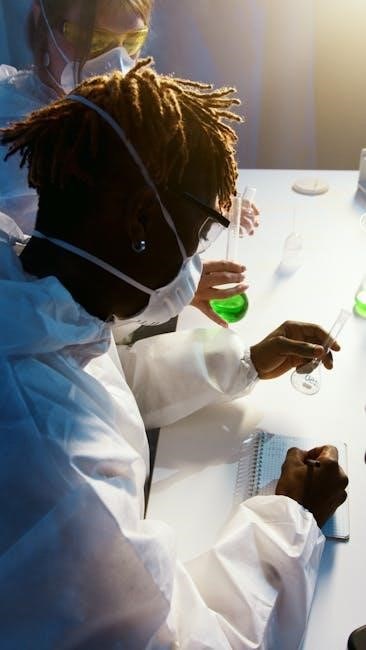The Medical Assistant Curriculum is designed to provide a comprehensive framework for training healthcare professionals. It focuses on developing essential skills in administrative and clinical domains, ensuring alignment with industry standards and the MAERB Core Curriculum requirements. This structured approach prepares students to meet the evolving demands of healthcare environments effectively.
1.1 Overview of the Medical Assistant Profession
The Medical Assistant profession involves multi-skilled healthcare professionals trained to perform both administrative and clinical tasks in ambulatory care settings. These professionals are essential in maintaining efficient healthcare delivery, from managing patient records to conducting basic medical procedures. Their role requires strong communication skills, attention to detail, and the ability to adapt to diverse patient needs. The profession is highly valued for its versatility and critical support in healthcare teams.
1.2 Importance of a Structured Curriculum
A structured Medical Assistant curriculum ensures students gain the necessary skills and knowledge to meet industry standards. It aligns with accrediting bodies like CAAHEP and MAERB, ensuring competency in cognitive, psychomotor, and affective domains. This framework prepares students for real-world challenges, fostering adaptability and professionalism in healthcare settings while keeping pace with medical advancements and patient care demands.
Core Curriculum Components
The core curriculum includes foundational subjects like anatomy, physiology, and microbiology, alongside infection control and communication skills, ensuring a well-rounded education for medical assistants.
2.1 MAERB Core Curriculum Overview
The MAERB Core Curriculum provides a structured framework for medical assisting education, emphasizing cognitive, psychomotor, and affective competencies. It outlines essential topics such as anatomy, physiology, and infection control, ensuring students gain comprehensive skills for clinical and administrative roles. Regular updates reflect industry advancements, aligning the curriculum with current healthcare practices and standards. This ensures graduates are well-prepared to meet the demands of the medical field effectively.
2.2 Key Subjects: Anatomy, Physiology, and Microbiology
The Medical Assistant Curriculum emphasizes Anatomy, Physiology, and Microbiology as foundational subjects. These courses provide students with a deep understanding of the human body’s structure and functions, as well as the principles of infectious diseases and microbiological practices. This knowledge is essential for performing clinical tasks, such as diagnosing illnesses and implementing infection control measures, ensuring competent patient care in real-world healthcare settings.
2.3 Infection Control and Safety Protocols
Infection control and safety protocols are critical components of the Medical Assistant Curriculum. Students learn techniques to minimize the spread of infectious diseases, including proper hand hygiene, use of personal protective equipment (PPE), and sterilization methods. These protocols align with healthcare standards, ensuring patient and staff safety. Training also covers emergency preparedness and OSHA guidelines, equipping medical assistants to maintain a safe environment in clinical settings.
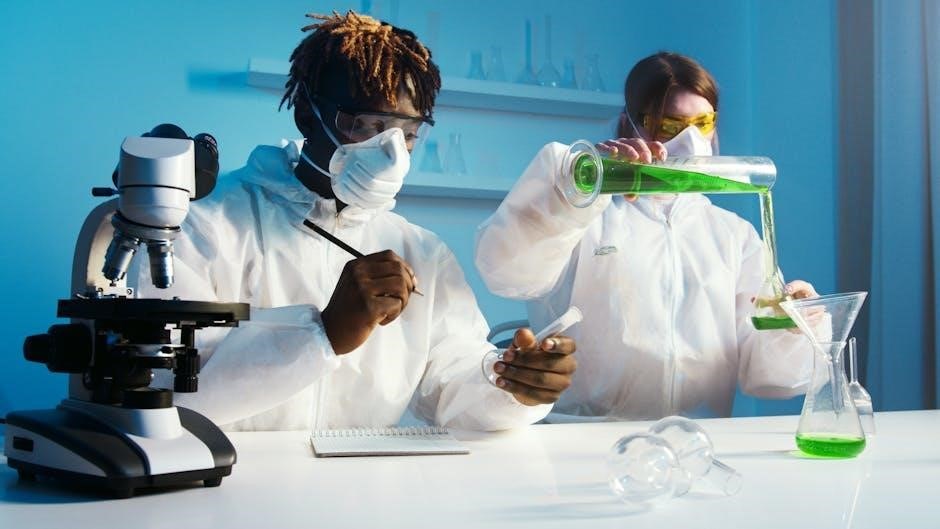
Competencies and Learning Domains
The curriculum focuses on three key domains: cognitive, psychomotor, and affective competencies. These ensure medical assistants possess the knowledge, skills, and professional behaviors needed for effective patient care.
3.1 Cognitive Competencies
Cognitive competencies form the foundation of a medical assistant’s knowledge base. They encompass essential subjects like anatomy, physiology, and medical terminology. These areas ensure a strong understanding of healthcare principles. The curriculum is designed to align with MAERB standards, providing a structured approach to learning. Assessments are integrated throughout the program to evaluate comprehension and ensure readiness for professional responsibilities and practical application.
3.2 Psychomotor Competencies
Psychomotor competencies involve the practical, hands-on skills required for medical assistants to perform clinical tasks effectively. These include taking vital signs, preparing patients for exams, and conducting lab tests. The curriculum emphasizes skill development through hands-on training and clinical experiences, ensuring proficiency in infection control, patient preparation, and medical procedures. These competencies are essential for delivering quality patient care in real-world healthcare settings.
3.3 Affective Competencies
Affective competencies focus on developing the interpersonal and emotional skills necessary for effective patient care. These include professionalism, empathy, and communication. The curriculum emphasizes ethical practices, patient-centered care, and cultural sensitivity. Students learn to maintain confidentiality, demonstrate compassion, and work collaboratively in diverse healthcare settings. These competencies are integrated into clinical training to ensure holistic professional development.
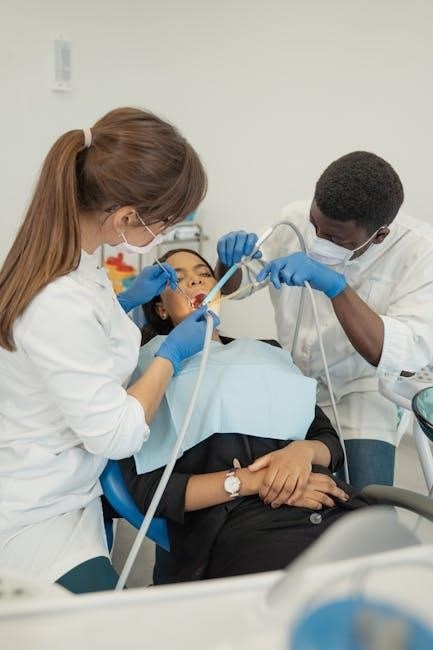
Course Sequence and Structure
The curriculum follows a structured progression, starting with prerequisites like medical terminology and anatomy, followed by core courses in clinical and administrative skills, ensuring a seamless transition into the workforce.
4.1 Suggested Course Sequence
The course sequence begins with foundational prerequisites like Medical Terminology and introductory courses on Anatomy and Physiology. Core courses follow, focusing on Applied Mathematics, Microbiology, and Infection Control. Clinical skill development is integrated, with hands-on training in patient care and administrative tasks. Electives may be offered based on student demand and program specialization. The curriculum concludes with a capstone clinical practicum, ensuring real-world application of learned skills.
4.2 Prerequisites and Core Courses
Prerequisites often include Medical Terminology and basic science courses, ensuring foundational knowledge. Core courses cover essential topics like Anatomy, Physiology, and Microbiology, alongside Infection Control and Applied Mathematics. These courses are designed to build a comprehensive understanding of healthcare principles and prepare students for clinical training. Core courses are typically restricted to program enrollees to maintain focus and ensure competency in critical areas.
4.3 Elective and Additional Courses
Elective courses allow students to explore specialized areas, such as Electronic Health Records or Advanced Microbiology, enhancing their skill sets. Additional courses may be offered based on student demand or emerging trends in healthcare. These electives provide flexibility, enabling students to tailor their education to specific career goals or interests, while maintaining alignment with the core curriculum requirements and industry standards.
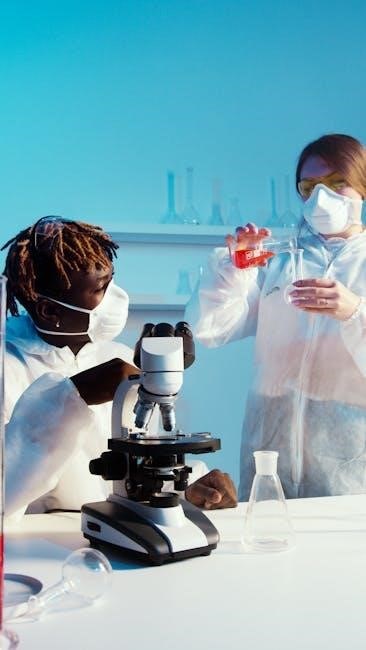
Clinical and Practical Training
Clinical experiences in healthcare settings provide hands-on training, allowing students to apply learned skills in real-world environments. Practical training enhances proficiency in patient care and administrative tasks.
5.1 Clinical Experiences in Healthcare Settings
Clinical experiences provide students with hands-on training in real healthcare environments. These placements allow students to apply their skills in patient care, administrative tasks, and medical procedures under supervision. Clinical rotations expose students to diverse healthcare settings, such as clinics and hospitals, preparing them for the challenges of the profession. These practical experiences are crucial for developing confidence and competence in medical assisting roles.
5.2 Hands-On Training and Skill Development
Hands-on training is essential for developing the practical skills required in medical assisting. Students engage in simulated labs and real-world clinical settings to master tasks like taking vital signs, administering injections, and preparing patients for exams. This training emphasizes infection control, patient safety, and effective communication. By practicing clinical procedures, students build confidence and proficiency, ensuring they are well-prepared for the demands of healthcare environments.
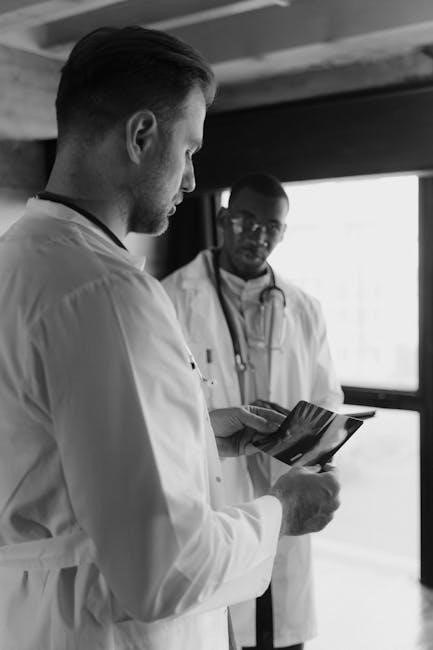
Program Accreditation and Standards
Accreditation ensures medical assistant programs meet rigorous educational standards, with CAAHEP serving as the primary accreditor. This process guarantees high-quality training aligned with industry expectations and competencies.
6.1 Role of CAAHEP Accreditation
CAAHEP accreditation ensures medical assistant programs meet rigorous educational standards, guaranteeing quality training. It validates curriculum alignment with industry demands, fostering competent graduates. CAAHEP’s recognition enhances program credibility and student confidence, ensuring they are well-prepared for certification exams and workforce entry.
6.2 On-Site Review and Compliance Evaluation
On-site reviews ensure medical assistant programs comply with CAAHEP standards. Review teams assess curriculum, facilities, and instructional methods to confirm alignment with accreditation requirements. This process verifies program quality, ensuring students receive education that prepares them for certification and employment. Feedback from evaluations helps programs improve and maintain high educational standards, fostering credibility and excellence in medical assistant training.

Employment Outlook and Growth
Demand for medical assistants is rising due to an aging population and expanded healthcare services. The field is projected to grow 29% by 2022, ensuring strong job security.
7.1 Projected Growth in the Medical Assistant Field
The demand for medical assistants is projected to grow significantly, with a 29% increase expected through 2022. This rapid growth is driven by an aging population and the expansion of healthcare services, particularly in outpatient settings. As healthcare facilities require more support staff, medical assistants will remain in high demand, offering strong employment opportunities and career stability in the healthcare sector.
7.2 Factors Driving Demand
The growing demand for medical assistants is fueled by an aging population requiring more healthcare services and a rise in outpatient care facilities. Additionally, technological advancements and an increased focus on preventive care contribute to the need for skilled professionals. These factors create a high demand for medical assistants in various healthcare settings, ensuring strong career opportunities and job stability in this field.

Skills and Responsibilities
Medical assistants require a blend of administrative and clinical skills, including patient preparation, vital sign collection, and infection control. They manage records and ensure efficient office operations, supporting healthcare teams effectively.
8.1 Administrative Duties
Medical assistants handle essential administrative tasks, such as scheduling appointments, managing patient records, and processing insurance claims. They also maintain office supplies, handle correspondence, and ensure compliance with privacy regulations like HIPAA. These duties require strong organizational and communication skills to support efficient healthcare operations and provide seamless patient care experiences.
8.2 Clinical Duties
Medical assistants perform essential clinical tasks, including obtaining patient histories, measuring vital signs, and preparing patients for exams; They assist with procedures, administer medications, and conduct basic lab tests. Clinical duties also involve maintaining sterile environments, practicing infection control, and using medical equipment. These responsibilities require precision, attention to detail, and strong patient interaction skills to ensure quality care and adherence to healthcare protocols.
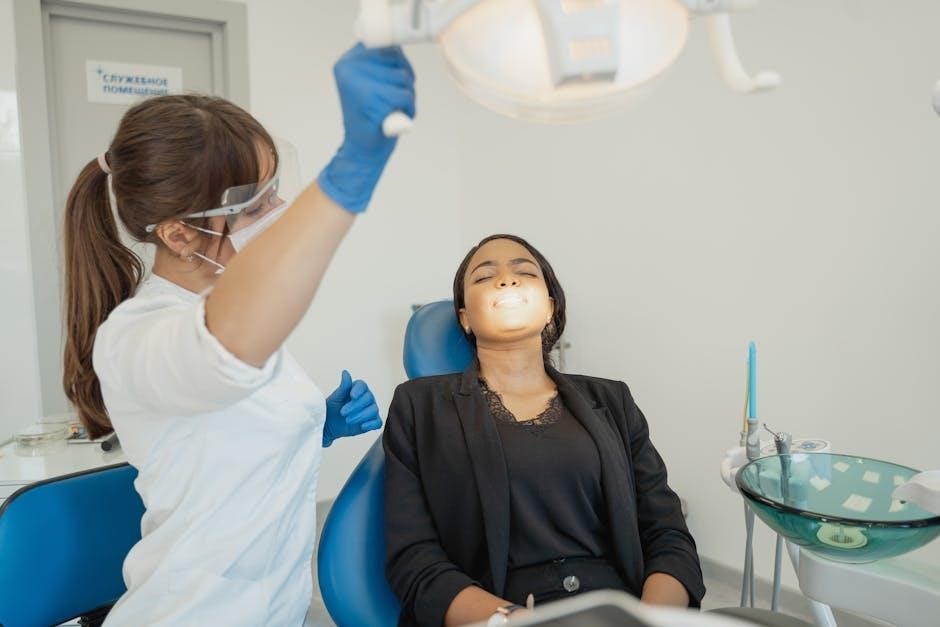
Specific Courses and Topics
The curriculum includes core subjects like Medical Terminology, Applied Mathematics, Anatomy, Physiology, and Microbiology. Topics such as Infection Control and Effective Communication are also emphasized for comprehensive training.
9.1 Medical Terminology
Medical Terminology is a foundational course teaching students the language of healthcare. It focuses on understanding prefixes, suffixes, and roots of medical terms, enabling effective communication. The curriculum covers terms related to body systems, diseases, treatments, and medications, ensuring proficiency in clinical and administrative settings. Interactive exercises and real-world applications enhance learning, preparing students to interpret and use medical terminology accurately in patient care and professional interactions.
9.2 Applied Mathematics
Applied Mathematics in the medical assistant curriculum focuses on practical calculations essential for healthcare tasks. Students learn to compute medication dosages, interpret vital signs, and manage medical records accurately. This course emphasizes real-world applications, ensuring proficiency in mathematical skills required for patient care and administrative duties. Mastery of these skills is crucial for maintaining accuracy and patient safety in clinical and office settings.
Assessment and Evaluation Methods
Assessment and evaluation methods ensure competency in medical assisting skills. These include quizzes, exams, lab practicals, and clinical evaluations. Continuous feedback aligns with MAERB standards, ensuring readiness for certification and practice.
10.1 Types of Assessments
Medical assistant programs use various assessment methods to evaluate student competency. These include quizzes, exams, lab practicals, and clinical evaluations. Summative assessments, like final exams, measure overall mastery, while formative assessments, such as quizzes, monitor progress. Practical assessments focus on clinical skills, ensuring proficiency in tasks like phlebotomy or EKGs. These methods align with MAERB standards, ensuring students are prepared for certification and real-world application of their skills.
10.2 Continuous Evaluation Process
The continuous evaluation process in medical assistant programs ensures ongoing assessment of student progress. It combines cognitive and psychomotor skill evaluations, with regular feedback from instructors and peers. This approach identifies areas for improvement and ensures alignment with industry standards. The process includes periodic quizzes, lab assessments, and clinical observations, fostering a culture of continuous learning and preparation for professional certification and real-world application of skills.
Transition to Employment
The medical assistant curriculum includes career placement assistance, resume building, and interview preparation to facilitate a smooth transition from education to employment in healthcare settings.
11.1 Career Placement Assistance
Medical assistant programs often provide robust career placement assistance, including resume building, interview preparation, and job placement services. These resources help graduates transition smoothly into healthcare roles. Many programs partner with local healthcare employers to offer job placement opportunities, ensuring students are well-prepared for the workforce. This support enhances employability and connects graduates with potential employers in clinics, hospitals, and private practices.
11.2 Alumni Support and Networking
Alumni support and networking are integral to the medical assistant curriculum, fostering long-term professional growth. Programs often provide alumni with access to career resources, mentorship opportunities, and ongoing education. Networking events and online communities help graduates connect with professionals in the field, enhancing job prospects and fostering collaboration. These initiatives ensure alumni remain engaged and supported throughout their careers, contributing to a strong professional network and continued success in the healthcare industry.
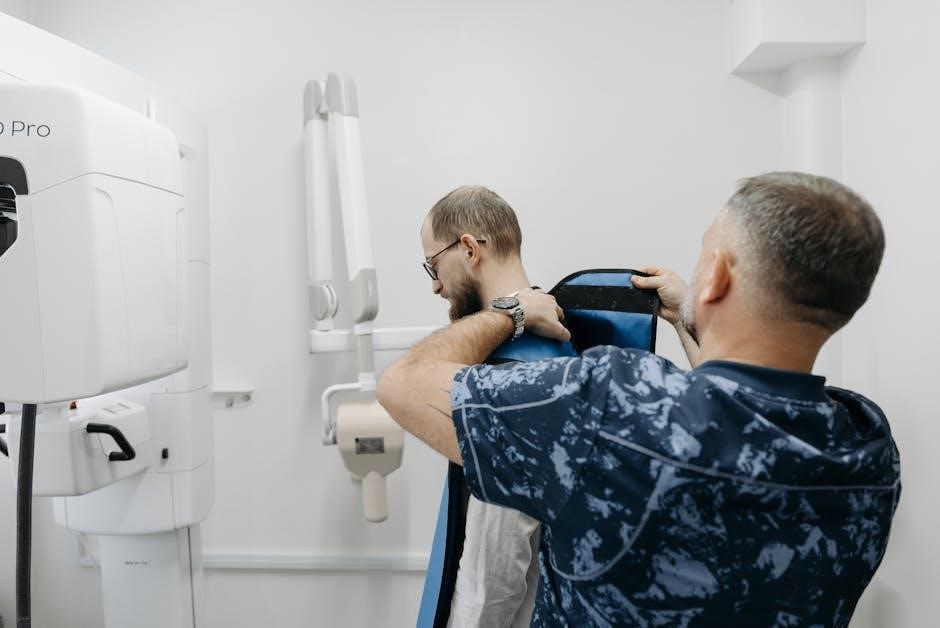
Influencing Factors
The aging population and advancements in healthcare technology significantly influence the medical assistant curriculum, driving demand for skilled professionals and shaping program content to meet evolving industry needs.
12.1 Aging Population Impact
The aging population significantly impacts the medical assistant curriculum, as the demand for geriatric care and chronic disease management increases. Programs now emphasize training in elder care, long-term health management, and palliative care techniques. This shift ensures medical assistants are equipped to handle the unique needs of an aging demographic, fostering a patient-centered approach in curriculum design and clinical training.
12.2 Advancements in Healthcare
Advancements in healthcare technology and practices drive continuous updates in the medical assistant curriculum. Programs now integrate training on electronic health records, telemedicine, and advanced diagnostic tools. Emphasis is placed on infection control and safety protocols, aligning with current medical standards. These updates ensure medical assistants are proficient in modern healthcare delivery, addressing evolving patient needs and industry innovations effectively.
Curriculum Evaluation and Revision
The medical assistant curriculum undergoes regular evaluation and revision to align with advancements in healthcare and educational standards, ensuring it remains relevant and effective for student success.
13.1 Regular Updates
The medical assistant curriculum is regularly updated to reflect advancements in healthcare practices, technologies, and educational standards. These updates ensure the program remains aligned with industry needs and prepares students for emerging challenges. Feedback from stakeholders, including educators and healthcare professionals, is incorporated to enhance the curriculum’s relevance and effectiveness. Regular reviews and adjustments ensure that the curriculum stays current, providing students with the most up-to-date knowledge and skills required for their profession;
13.2 Stakeholder Feedback
Stakeholder feedback plays a crucial role in shaping the medical assistant curriculum. Input from educators, healthcare professionals, and alumni ensures the program remains relevant and effective. Feedback is used to refine course content, improve teaching methods, and align the curriculum with industry needs. This collaborative approach helps maintain high educational standards and prepares students for real-world challenges in healthcare settings.

Professional Development
The medical assistant curriculum emphasizes continuing education and certification maintenance, fostering lifelong learning and professional growth. These elements ensure graduates stay current with industry advancements and standards.
14.1 Continuing Education
Continuing education is crucial for medical assistants to stay updated on medical advancements, technologies, and regulatory changes. It ensures ongoing competency and adaptability in dynamic healthcare environments. Programs often include workshops, seminars, and online courses, focusing on areas like patient care, clinical techniques, and practice management. By committing to lifelong learning, medical assistants enhance their skills, deliver high-quality care, and maintain professional certifications, ultimately benefiting patient outcomes and career growth.
14.2 Certification Maintenance
Certification maintenance is essential for medical assistants to uphold professional credentials and stay current with industry standards. Recertification typically requires passing exams or completing continuing education courses. Professional organizations, like the American Association of Medical Assistants (AAMA), provide resources to maintain certifications. Regular updates ensure medical assistants remain proficient in clinical and administrative skills, adapting to advancements in healthcare and technological innovations, while reinforcing patient care and safety standards.
Future Trends
Future trends in medical assisting highlight the integration of telehealth and specialized clinical roles, necessitating ongoing professional development to meet evolving healthcare demands.
15;1 Emerging Technologies
Emerging technologies, such as telehealth platforms and electronic health records (EHRs), are reshaping the role of medical assistants. Curriculum updates now emphasize proficiency in digital tools, enabling seamless patient care and data management. Artificial intelligence and wearable devices are also being integrated, requiring medical assistants to adapt to innovative practices. These advancements ensure the curriculum remains relevant, preparing students for a tech-driven healthcare landscape.
15.2 Specialization Opportunities
Medical assistants can pursue specializations in niche areas like podiatry, chiropractic care, or ophthalmology, enhancing their expertise. Specialized training expands career opportunities, allowing medical assistants to work in diverse healthcare settings. These opportunities align with industry demands, offering a pathway for professionals to remain competitive in a dynamic healthcare landscape while providing tailored patient care in specific medical disciplines.
